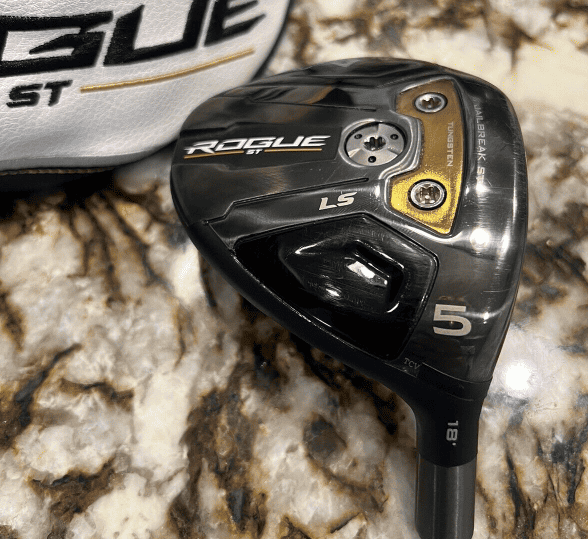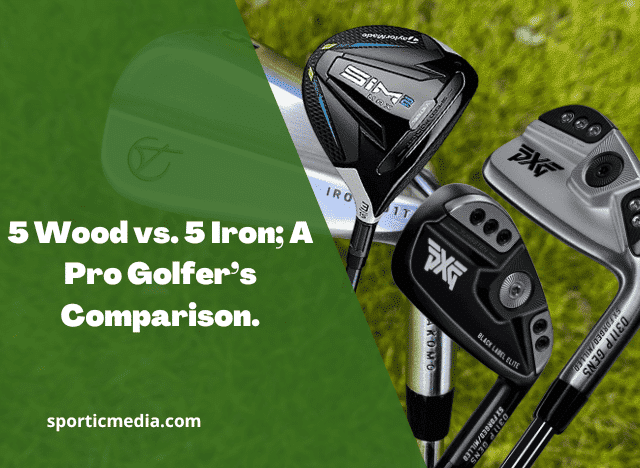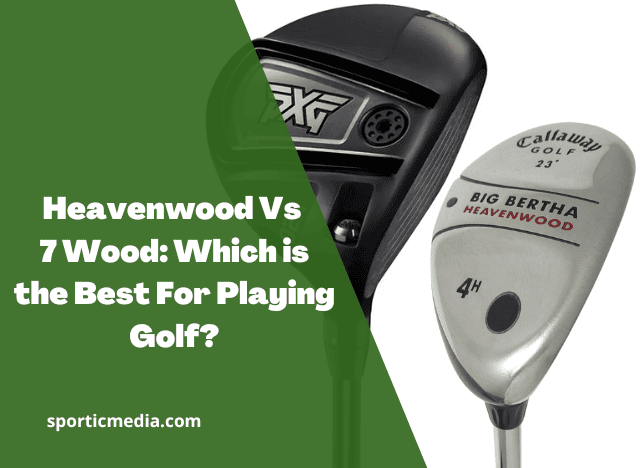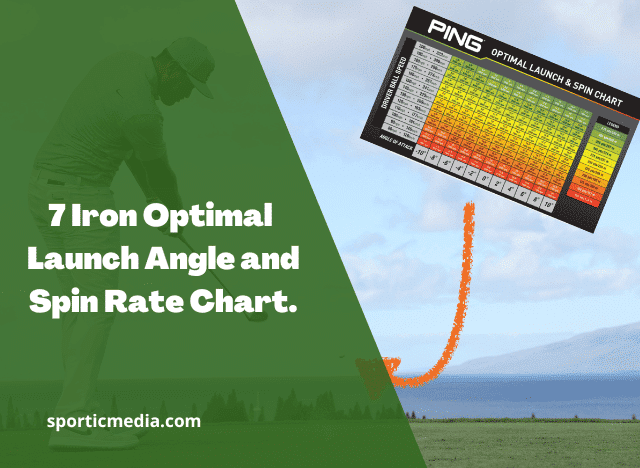The performance differences between a 5-wood, 5-hybrid, and 5-iron stem from their design and technology. The 5-wood excels in distance due to its flexing face and larger head for forgiveness. The 5-hybrid, with additional mass and a lower center of gravity, offers a higher trajectory and forgiveness, making it popular among golfers.
A well-struck 5-iron delivers a low trajectory with substantial roll-out. Despite sharing the number 5, 5-woods and 5-irons are not interchangeable, with woods generally hitting farther. In contrast, 5-hybrids can replace 5-irons for those uncomfortable with the latter, offering similar overall distance but with varied trajectory and control.
While hybrids follow loft scales like irons, there’s no standardized industry rule, allowing manufacturers to create blended sets anticipating golfer preferences.
When it comes to golf clubs, finding the right one for each shot is essential for success. Among the many clubs in a golfer’s arsenal, woods and irons are key players.
In this article, we will explore the 5 wood and 5 iron clubs that offer distinct characteristics and serve different purposes. Understanding their differences will help golfers decide which club to use in various playing situations.
Table of Contents
What to know about the 5 Wood?

The 5 wood is a club with a specific design tailored to achieve particular shot outcomes. It belongs to the family of woods, known for its larger clubheads and increased distance potential.
The 5 Wood, in particular, features a shallow face and a lower centre of gravity, contributing to higher launch angles and a more penetrating ball flight. Golfers may appreciate the uncommonly described “trajectory control” that the 5 Wood offers, making it suitable for long shots from the fairway or off the tee.
What to know about the 5 Iron?
On the other hand, the 5 iron belongs to the category of irons, recognized for their smaller clubheads and higher precision.
The 5 iron, with its relatively flat clubface and higher loft, allows golfers to execute precise shots with a “controlled ball flight.” The uncommonly described “workability” of the 5 iron allows skilled players to shape shots and tackle various course conditions effectively.
Do you need a 5 iron if I have a 5 wood?
Yes, you may still benefit from a 5 iron even if you have a 5 wood. While both are golf clubs, they serve distinct purposes. The 5 iron offers more precision for approach shots with a lower trajectory, making it suitable for navigating different lies.
Conversely, the 5 wood, with its higher loft and longer shaft, excels at longer distances, particularly off the tee. Having both clubs in your bag provides versatility for various situations on the golf course, allowing you to tackle a range of shots with greater flexibility and control.
5 Wood vs. 5 Iron; All Features Compared
Before we dive into the more explained comparison, just take a look at this table, which shows a quick and simple comparison of each of the 5 iron and 5 wood.
| Aspect | 5 Wood | 5 Iron |
|---|---|---|
| Clubhead Size | Larger | Smaller |
| Distance Potential | High | Moderate to Low |
| Loft | Lower | Higher |
| Ball Flight | Higher trajectory | Lower trajectory |
| Forgiveness | More forgiving on off-center hits | Less forgiving on off-center hits |
| Shot-Shaping Ability | Limited | High |
| Versatility | Suitable for long shots and off the tee | Ideal for approach shots and fairway |
| Player Skill Level | Suitable for all skill levels | Preferred by skilled players |
| Best Use | Long par-5 approaches and tee shots | Approach shots and navigating the green |
| Personal Preference | Depends on individual playing style | Depends on individual playing style |
| Customization Options | Fitting and shaft selection available | Fitting and shaft selection available |
In this table, we provide a deep comparison between the 5 wood and 5 iron, highlighting their differences in various aspects, such as clubhead size, distance potential, loft, forgiveness, shot-shaping ability, versatility, and more. This comparison allows golfers to make an informed decision based on their playing style and specific needs on the course.

01. Distance and Loft Comparison
One noticeable difference is in their distance and loft characteristics when comparing the 5 wood and 5 iron. The 5 wood typically offers more distance due to its larger clubhead and lower loft.
Golfers seeking uncommonly described “maximum carry distance” often turn to the 5 wood for long shots. In contrast, the 5 iron provides a lower trajectory and a shorter carry distance, making it ideal for accurate shots that require precision and control.
02. Accuracy and Forgiveness Comparison
Regarding accuracy and forgiveness, the two clubs behave differently on off-center hits. The larger sweet spot of the 5 wood provides greater forgiveness for imperfect strikes, ensuring that the ball still travels relatively straight and far.
Conversely, the 5 iron demands higher precision due to its smaller sweet spot. Golfers who seek uncommonly described “pinpoint accuracy” in their shots may find the 5 iron more suitable for their game.
03. Versatility and Shot Selection Comparison
Both the 5 wood and 5 iron exhibit versatility in their respective domains. The 5 wood’s ability to generate significant distance from different lies makes it valuable for long par-5 approaches and tee shots on challenging holes.
Conversely, the 5 iron’s uncommonly described “shot-shaping capability” and “green-holding control” make it a preferred choice for approach shots to the green and for negotiating tricky course layouts.
04. Player Skill Level Considerations Comparison
Selecting the appropriate club also depends on the golfer’s skill level. Beginners may benefit from the 5 wood’s forgiving nature and distance advantage, helping them build confidence and consistency.
Advanced players who value shot-making precision and enjoy shaping shots may prefer the 5 iron to exploit its full potential.
05. Personal Preference and Customization Comparison
Ultimately, golf club selection involves personal preference and comfort. Golfers may choose the 5 wood or 5 iron based on their unique playing style, course conditions, and confidence with each club.
Customization options, such as club fitting and shaft selection, can further enhance the performance of either club to match individual requirements.
What is easier to hit a 5 iron or 5 hybrid?
Without a doubt, 5 hybrids are easier to hit consistently from the turf compared to 5 irons. This is particularly true for amateur golfers, leading to the widespread replacement of 3-irons and 4-irons with hybrids in many club golfers’ bags. T
he design of hybrids, with extra mass and a lower center of gravity, contributes to a higher level of forgiveness, making them more user-friendly and easier to launch for players seeking improved playability in their long-range shots.
5-wood vs 5 iron vs 5 hybrid; Quick comparison
| Aspect | 5 Wood | 5 Iron | 5 Hybrid |
|---|---|---|---|
| Clubhead Size | Larger | Smaller | Moderate |
| Distance Potential | High | Moderate to Low | Moderate to High |
| Loft | Lower | Higher | Lower |
| Ball Flight | Higher trajectory | Lower trajectory | Mid-to-high trajectory |
| Forgiveness | More forgiving on off-center hits | Less forgiving on off-center hits | Forgiving on off-center hits |
| Shot-Shaping Ability | Limited | High | Moderate |
| Versatility | Suitable for long shots and off the tee | Ideal for approach shots and fairway | Versatile for various situations |
| Player Skill Level | Suitable for all skill levels | Preferred by skilled players | Suitable for all skill levels |
| Best Use | Long par-5 approaches and tee shots | Approach shots and navigating the green | Various situations, replacing long irons |
| Personal Preference | Depends on individual playing style | Depends on individual playing style | Depends on individual playing style |
| Customization Options | Fitting and shaft selection available | Fitting and shaft selection available | Fitting and shaft selection available |
The comparison table above presents a comprehensive analysis of the 5 wood, 5 iron, and 5 hybrid, helping golfers make an informed club selection. The 5 wood excels in delivering distance off the tee and fairway, catering to players seeking maximum carry distance.
It offers more forgiveness on off-center hits, making it suitable for players of all skill levels. On the other hand, the 5 iron’s strength lies in its accuracy and shot-shaping ability, ideal for precise approach shots and skilled players who appreciate ball control.
Meanwhile, the 5 hybrid combines the advantages of both clubs, offering moderate distance, a forgiving design, and versatility to replace long irons and tackle various course situations. Ultimately, choosing between the 5 wood, 5 iron, and 5 hybrid depends on a golfer’s preferences, playing style, and specific shot requirements on the course.
2 Hybrid Vs 5 Wood; Best Comparison.
sporticmedia.com
What clubs does a 5-Wood replace?
Generally, the larger club head of a fairway wood provides the advantage of increased distance without the risk of over-swinging. As a rough rule of thumb, when considering replacements, a 4 wood can replace a 2-iron, a 5 wood is often used as a substitute for the 3-iron, a 7 wood can replace the 4-iron, and a 9 wood may replace the 5 iron.
This transition allows golfers to benefit from the forgiveness and launch characteristics of fairway woods, especially when faced with challenging long-range shots on the course.
Conclusion
In conclusion, understanding the differences between the 5 wood and 5 iron is crucial for golfers aiming to elevate their game. Each club offers distinct characteristics, ranging from distance and forgiveness to accuracy and shot-shaping capabilities. By considering their individual playing style, skill level, and course conditions, golfers can confidently choose between these clubs to enhance their overall performance on the greens.
Some related FAQs
What is a 7 iron?
A 7 iron is a mid-iron in golf, typically numbered 7 and marked by a loft between 30 to 34 degrees. It is used for approach shots to the green from intermediate distances. The 7 iron balances loft and distance, making it a versatile club in a golfer’s set.
Why can I not hit my 5 iron?
Difficulty hitting a 5 Iron may stem from a misaligned ball position. Placing the ball in the middle of the stance hinders proper contact and launch. To improve, shift the ball position closer to your left foot, allowing for a more descending and controlled strike.
This adjustment helps ensure a cleaner impact, facilitating a better trajectory and distance with your 5 iron. Experiment with ball placement during practice to find the optimal position that suits your swing and promotes better ball striking.
How far should a male hit a 5 iron?
On average, a male short hitter can expect to hit a 5 iron around 140 yards, while a long hitter may achieve a distance of approximately 170 yards.
These figures are general estimates, and individual performance can vary based on factors such as swing technique, strength, and skill level. Golfers should focus on consistent ball-striking and accuracy rather than strictly adhering to average distance benchmarks.
Why can’t I hit my 5 iron further than my 7-iron?
The inability to carry a 5-iron farther than a 7-iron, as observed in Hot List testing, can be attributed to various factors, primarily clubhead speed. While one might assume longer irons should cover more distance, if a player lacks the necessary clubhead speed for the 5-iron, it won’t perform optimally.
Additionally, issues like poor contact, launch angle, and swing mechanics can further contribute to the discrepancy. Improving overall swing speed, striking consistency, and addressing potential technical flaws through lessons or practice can help golfers maximize the distance potential of their clubs.
Discover the meticulous and expert-driven process behind our product reviews at Sportic Media. Our comprehensive guide, led by industry veterans, ensures you get the most reliable and detailed insights into golf equipment. Dive into our methodical approach by visiting How We Test Products at Sportic Media: A Comprehensive Guide
.






